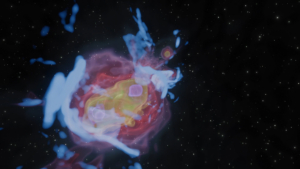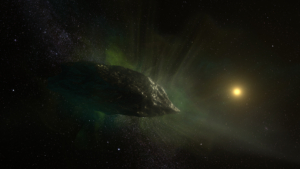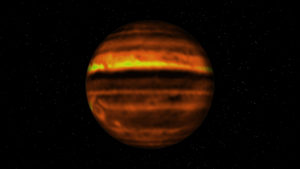Collaboration between the National Radio Astronomy Observatory, the Green Bank Observatory, and Raytheon Intelligence & Space turns the Green Bank Telescope and the Very Long Baseline Array into a radar system for studying the Solar System.
ALMA Shows Volcanic Impact on Io’s Atmosphere
New radio images from ALMA show for the first time the direct effect of volcanic activity on the atmosphere of Jupiter’s moon Io.
NRAO Contest Winners Illustrate Diverse Cosmic Phenomena
Winners in NRAO’s VLA 40th Anniversary Image Contest are from around the world, and their works illustrate a fascinating variety of celestial objects. Entries combined observational data from the VLA with data from optical, infrared, and X-ray telescopes, and from computer simulations.
ALMA Reveals Unusual Composition of Interstellar Comet 2I/Borisov
ALMA is the first telescope to measure the gases originating directly from the nucleus of an object that travelled to us from another planetary system.
Radio Jupiter: Seeing the Giant Planet in a New Light
By looking at Jupiter in radio light, ALMA and the VLA reveal a world hidden by its layers of clouds.
Image Release: ALMA Shows What’s Inside Jupiter’s Storms
New radio wave images made with the Atacama Large Millimeter/submillimeter Array (ALMA) provide a unique view of Jupiter’s atmosphere down to fifty kilometers below the planet’s visible cloud deck.











